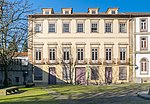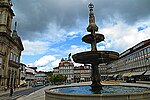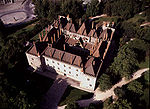Oliveira, São Paio e São Sebastião
AC with 0 elementsBraga geography stubsParishes of GuimarãesTowns in Portugal

Oliveira, São Paio e São Sebastião (officially: União das Freguesias de Oliveira, São Paio e São Sebastião) is a civil parish in the municipality of Guimarães, Portugal. It was formed in 2013 by the merger of the former parishes Oliveira do Castelo, São Paio, and São Sebastião. The population in 2021 was 7,832, in an area of 1.55 km2. The civil parish makes up the city centre of Guimarães.
Excerpt from the Wikipedia article Oliveira, São Paio e São Sebastião (License: CC BY-SA 3.0, Authors, Images).Oliveira, São Paio e São Sebastião
Largo da Oliveira, Guimarães
Geographical coordinates (GPS) Address Nearby Places Show on map
Geographical coordinates (GPS)
| Latitude | Longitude |
|---|---|
| N 41.443 ° | E -8.293 ° |
Address
Café Medieval
Largo da Oliveira
4800-000 Guimarães (Oliveira, São Paio e São Sebastião)
Portugal
Open on Google Maps











